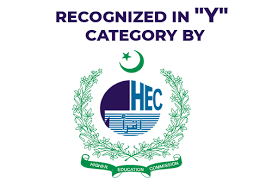Compatibility of Sustainable Development Goals (SDGs) with Maqasid al-Shariah: Are there any Missing Goals
Abstract
 Abstract Views: 567
Abstract Views: 567
After the partial success of Millennium Development Goals (MDGs-2015), the United Nations Development Programme (UNDP) introduced the Sustainable Development Goals (SDGs-2030) for the next fifteen years. The seventeen SDGs have been adopted by almost all member countries of the UN. These goals mainly cover three dimensions of sustainable development, namely social, economic and environmental, and they aim to ensure the sustainability of resources and life on earth. Muslims constitute more than 1/4th of the total world population and there are fifty-seven sovereign states in the world with a Muslim majority. This paper is an attempt to evaluate SDGs in the light of Islamic teachings pertaining to environmental sustainability and human development. The Islamic vision of peace, progress and its continuity was expounded by early Muslim thinkers in the form of Maqasid al-Shariah. The objective of this paper is to show how SDGs are compatible with Maqasid al-Shariah. It also identifies the gaps in the existing SDGs in the light of Islamic teachings. This study used primary Shariah sources to show the similarities between SDGs introduced by UNDP and the axioms of Maqasid al-Shariah. Additionally, the shortcomings of SDGs when compared with the axioms of Maqasid al-Shariah are identified. These shortcomings are related to justice, ethics, and humanity. The improvements suggested in this study may make SDGs universal. Hence, this is a distinctive study which has attempted to augment the globally recognized socio-economic objectives of SDGs. Consequently, it allows for a better understanding of SDGs and ensures their applicability in Muslim societies.
Keywords
Maqasid al-Shariah (MS), Missing Goals (MS), Sustainable Development Goals (SDGs)
Downloads
References
Abdullah, M. (2018). Waqf, Sustainable Development Goals (SDGs) and maqasid al-shariah. International Journal of Social Economics, 45(1), 158-172. https://doi.org/10.1108/IJSE-10-2016-0295
Ahmed, A. R. Y. (2011, December). An Introduction to an Islamic Theory of Economic Development. In 8 th International Conference on Islamc Economic and Finance. Makalah diakses dari http://conference. qfis. edu. qa/app/media/248 pada tanggal (Vol. 24). http://www.iefpedia.com/english/wp-content/uploads/2011/12/Abdel.Rahman-Yousri.Ahmed-unedited.pdf
Al Haq, M. A., & Abd Wahab, N. (2019). The Maqasid Al Shariah and the sustainability paradigm: Literature review and proposed mutual framework for asnaf development. Journal of Accounting and Finance in Emerging Economies, 5(2), 179-196. https://doi.org/10.26710/jafee.v5i2.854
Ali, A. F. M., Rashid, Z. A., Johari, F., & Ab Aziz, M. R. (2015). The effectiveness of zakat in reducing poverty incident: An analysis in Kelantan, Malaysia. Asian Social Science, 11(21), 355. https://doi.org/10.5539/ass.v11n21p355
Dariah, A. R., Salleh, M. S., & Shafiai, H. M. (2016). A new approach for sustainable development goals in Islamic perspective. Procedia-Social and Behavioral Sciences, 219, 159-166. https://doi.org/10.1016/j.sbspro.2016.05.001
Hasan, Z. (2006). Sustainable development from an Islamic perspective: Meaning, implications, and policy concerns. Journal of King Abdulaziz University: Islamic Economics, 19(1).
Hassan, M. K., & Ashraf, A. (2010, January). An integrated poverty alleviation model combining zakat, awqaf and micro-finance. In Seventh International Conference–The Tawhidic Epistemology: Zakat and Waqf Economy, Bangi, Malaysia (pp. 261-281). Seventh International Conference – The Tawhidi Epistemology: Zakat and Waqf Economy, Bangi 2010.
Imperatives, S. (1987). Report of the World Commission on Environment and Development: Our common future. Accessed Feb, 10, 1-300. http://www.ask-force.org/web/Sustainability/Brundtland-Our-Common-Future-1987-2008.pdf
Ismail, A. G., & Shaikh, S. A. (2017). Role of Islamic economics and finance in sustainable development goals (Working Paper No. 5). Bangi: Islamic Economic Studies and Thoughts Centre.
Sequeira, T. N., & Ferreira-Lopes, A. (2011). An endogenous growth model with human and social capital interactions. Review of Social Economy, 69(4), 465-493. https://doi.org/10.1080/00346764.2011.592330
Shirazi, N. S., Amin, M. F. B., & Anwar, T. (2009). Poverty Elimination through Potential Zakat Collection in the OIC-member Countries: Revisited [with Comments]. The Pakistan Development Review, 48(4), 739-754.
UN. (n.d.). Take Action for the Sustainable Development Goals. Sustainable Development Goals. https://www.un.org/sustainabledevelopment/sustainable-development-goals/
OPHI. (2020). charting pathways out of multidimensional poverty: Achieving the SDGs. Global MPI 2020. https://ophi.org.uk/global-mpi-report-2020/
OPHI. (2019). Global Multidimensional Poverty Index 2019. Oxford Poverty and Human Development Initiatives. https://ophi.org.uk/global-multidimensional-poverty-index-2019-illuminating-inequalities/.
United Nation. (2019). World on course for more than 3 degree spike, even if climate commitments are met. UN Emission Report. https://news.un.org/en/story/2019/11/1052171
Corpus Quran. (n.d.). English Translation. https://corpus.quran.com/translation.jsp?
Jarvie, M. E. (2016, May 20). Brundtland Report. Encyclopedia Britannica. https://www.britannica.com/topic/Brundtland-Report
IIIBF. (n.d.). Sustainable Development Goals form Shariah Perspective. https://www.iiibf.com/the-sustainable-development-goals-from-a-shariah-perspective/
Hussain, Z. (n.d.). Hadith. Islam360. https://theislam360.com/
Copyright (c) 2022 Hafiz Abdur Rehman Hafiz

This work is licensed under a Creative Commons Attribution 4.0 International License.
Authors retain copyright and grant the journal right of first publication with the work simultaneously licensed under a Creative Commons Attribution (CC-BY) 4.0 License that allows others to share the work with an acknowledgement of the work’s authorship and initial publication in this journal.












